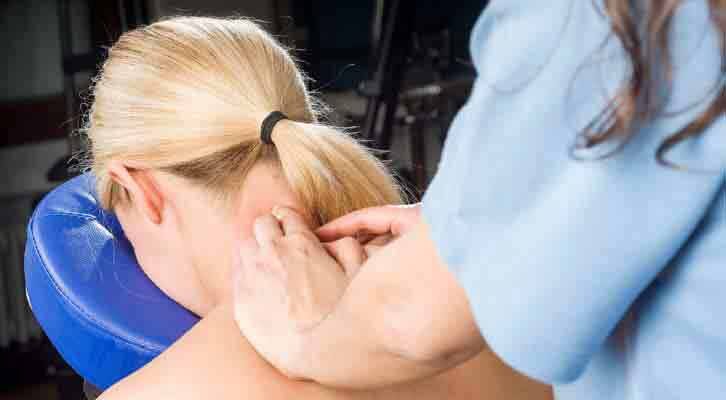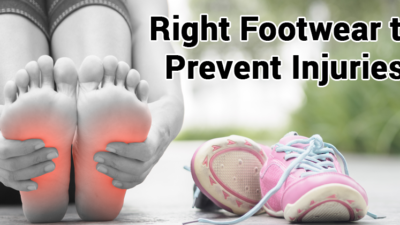Lupus is defined as a chronic autoimmune disease of the skin that occurs when damage to the tissues mediates the immune response. The disorder can involve the skin, joints, kidneys, central nervous system, cardiovascular system, and immune systems. Unfortunately, the exact cause of the disease is not known. However, multiple studies have identified different risk factors such as viruses, the release of hormones during pregnancy, and gene disorders. The disease is more common in females than males (especially pregnant women) between 15 to 44 years of age. Besides medical management of the disease, physical therapy plays an essential role in the treatment. The primary purpose of this article is to discuss the impact of physical therapy on this disease.
Symptoms of Lupus
Before we start with a discussion about the role of physical therapy in the management of lupus, it is necessary to mention symptoms:
- Fever
- Tiredness
- Malaise
- Joint pain, stiffness, and swelling
- Butterfly-shaped rash on the face that covers the cheeks and bridge of the nose
- A headache, confusion, and memory loss
- Dry eyes
- Chest pain
- Shortness of breath
Other symptoms are system specific. These symptoms may lead to remission of symptoms meaning you may suffer from cycles of illness followed by a feeling of well-being. If you experience these symptoms, make sure you schedule an appointment and see your doctor.

Physical Therapy and Lupus
Lupus, also known as Systemic Lupus Erythematous (SLE), is a disorder that affects multiple systems in the body. Physical therapy aims to regain your strength, flexibility, and mobility by relieving pain and stiffness. Regular exercising also acts as a stress buster. Physical therapy can be given in the form of exercises, occupational or recreational therapy.
People also ask
Q. What vitamins are good for arthritis pain?
A. Nutritional deficiencies are common in arthritis sufferers which are why doctors often recommend their arthritis patient to take dietary supplements containing these nutrients to ease joint pain.. https://www.jointhealthmagazine.com/vitamins-for-arthritis-joint-pain.html
Q. What is Turmeric Curcumin Plus?
A. Turmeric Curcumin Plus is a natural dietary supplement, formulated to aid in boosting joint health and function. Its formulated from Turmeric, which is Super food and it functions well in boosting the general health and wellness of the consumer. https://www.jointhealthmagazine.com/turmeric-plus-review.html
Q. What supplement works best for joint pain?
A. Some consequences of aging – those grey hairs and crow’s feet, for instance – merely change the way we look. As we age on the outside, our joints and ligaments also get older, which often leads to joint pain. And unlike changes to our skin and hair..https://www.jointhealthmagazine.com/jointrelief
Q. How much glucosamine do I need?
A. Arthritis is a very common problem among the Americans. According to the statistics, around 22.7% of the American adults are diagnosed with some forms of arthritis, such as gout, lupus, rheumatoid arthritis, and others..https://www.jointhealthmagazine.com/whats-the-best-glucosamine-dont-take-the-wrong-kind.html
Q. What is the main cause of arthritis?
A. Arthritis is a condition that affects the body’s musculoskeletal system, mainly the joints. It’s reported that this condition is the main reason for disability among people over the age of 55 in the western countries..https://www.jointhealthmagazine.com/causes-of-arthritis.html
Q. What are the side effects of taking Omega XL?
A. Omega XL is a dietary supplement that is designed to help people with painful joints. The products is advertised as a natural supplement that uses handpicked ingredients. According to the producers..https://www.jointhealthmagazine.com/omega-xl.html
Q. Can allergies cause body aches?
A. Rarely do people associate joint pain with allergies. The truth however is that when allergies cause inflammation, joint pains are inevitable. Well, let’s first try to understand what allergies are .The Meaning of Allergies..https://www.jointhealthmagazine.com/how-is-joint-pain-tied-to-allergies.html
Q. What causes pain in the finger joints?
A. Imagine your fingers aching every time you use them. That could be awful. You cannot push a key on your laptop, complete a message on your Android phone, hit those guitar chords, thoroughly and thoroughly clean your body or the plate you used last night..https://www.jointhealthmagazine.com/finger-joint-pain.html
Q. What is in vital 3?
A. Vital 3 is a natural joint supplement that is sold and marketed to promote healthy joint muscles and at the same time to promote joint comfort and improve joint lubrication. As a long term joint care ingredient, this product is touted to work within the first six weeks..https://www.jointhealthmagazine.com/vital-3.html
The physical therapist performs an assessment before initiating the treatment. The therapist will take your medical history in detail and perform a medical examination which includes measuring the:
- Range of motion
- Muscle strength
- Motor functions
- Respiratory functions
Following the assessment, the therapist designs an exercise regimen for you. The regimen may vary from person to person depending upon the severity of lupus. Physical therapy program will concentrate on working towards your functional disability due to joint pain and joint stiffness.
Now that you know more about the basic goals and aims of the physical therapy program let’s discuss the common physical therapy techniques employed to manage the condition.
1. Electrotherapy
Electrotherapy is defined as the use of electrical energy as a medical treatment. It is used to treat a broad range of neurological and physical diseases, including lupus. It’s also important to mention that hot and cold packs are essential in relieving pain and swelling.
2. Aerobic Exercises
Fatigue is one of the most common symptoms encountered in lupus. Aerobic exercise relieves your fatigue by increasing the aerobic capacity. To increase the aerobic capacity, you need to perform the aerobic exercises for about eight weeks. Scientists at the Robert B. Brigham Multipurpose Arthritis Center from Boston, Massachusetts followed 23 people having lupus who performed aerobic exercises for eight weeks. Results, published in the British Journal of Rheumatologyshowed that after eight weeks an increase was seen in the oxygen inspired. This increase was directly related to a decrease joint pain fatigue.
3. Massage and acupuncture
Both massage and acupuncture help in reducing pain. Massage also helps in correcting stiffness, thereby increasing your flexibility. One of the major benefits of these methods is that they don’t have any side effects. Let your therapist know if you have any fear of the needle or lightheadedness following the acupuncture injection. A study from theJournal of Ayurveda and Integrative Medicinefound that massage and acupuncture reduce pain, improve the quality of sleep and overall health in patients with lupus.
4. Hydrotherapy
Commonly known as water therapy, hydrotherapy is an easy and efficient way of regaining range of motion without any pain. The main reason behind this is the buoyancy of water. Warm water (32.2° to 34.4°) is preferred for therapeutic use.

5. Posture training
Your gait and posture may be affected due to the persistent pain and stiffness. Your healthcare provider will teach you posture exercises and provide you with an external orthotic device, if necessary.
Occupational Therapy
Apart from physical therapy, occupational therapy also plays a major role in the management of lupus. You can regain your lost functional freedom with the help of this treatment. The aim of occupational therapy includes:
- Promotion of daily living activities (ADLs)
- Providing education about joint conservation
- Relieving fatigue
Your therapist will help you perform ADLs with the help of the special supportive device, such as modified toilet seat, splints and braces, long spoons, and so on. These devices are designed to make you perform the activities independently. Common ADL training includes feeding, dressing, bathing, toileting, and grooming.
To protect your joints from any further injury, your therapist will re-educate you about the joint conservation techniques. The most common being paraffin wax bath. These energy conservation techniques, if followed correctly, will relief your fatigue also.
You can modify your home by adding side rails beside the bathtub and toilet seat, walking carefully on the floor to prevent fall, and so on.
Let’s not forget you should avoid sun exposure and apply high-quality sunscreen about 20 minutes before you go out. According to a study from the Journal of Clinical and Aesthetic Dermatology minimizing cosmetic damage i.e. skin problems should be a major aspect of lupus management.
When to ask for help
If pain occurs for more than 1 or 1.5 hours DO NOT continue the exercise, stop them immediately. Call your therapist if:
- You have health issues
- You notice any side effects of the therapy
- If you feel that the training regimen needs to be modified
Conclusion
Lupus is a chronic inflammatory disease that has a tremendous potential to affect the overall quality of life. Luckily, there are many ways one can manage this disease, and multiple studies have shown that physical therapy is an excellent way to control the disease and relieve the pain. This article provided more insight into lupus; it’s recommended to consult your doctor about the therapy or exercises you can do.







 This article changed my life!
This article changed my life! This article was informative.
This article was informative. I have a medical question.
I have a medical question.
 This article contains incorrect information.
This article contains incorrect information. This article doesn’t have the information I’m looking for.
This article doesn’t have the information I’m looking for.